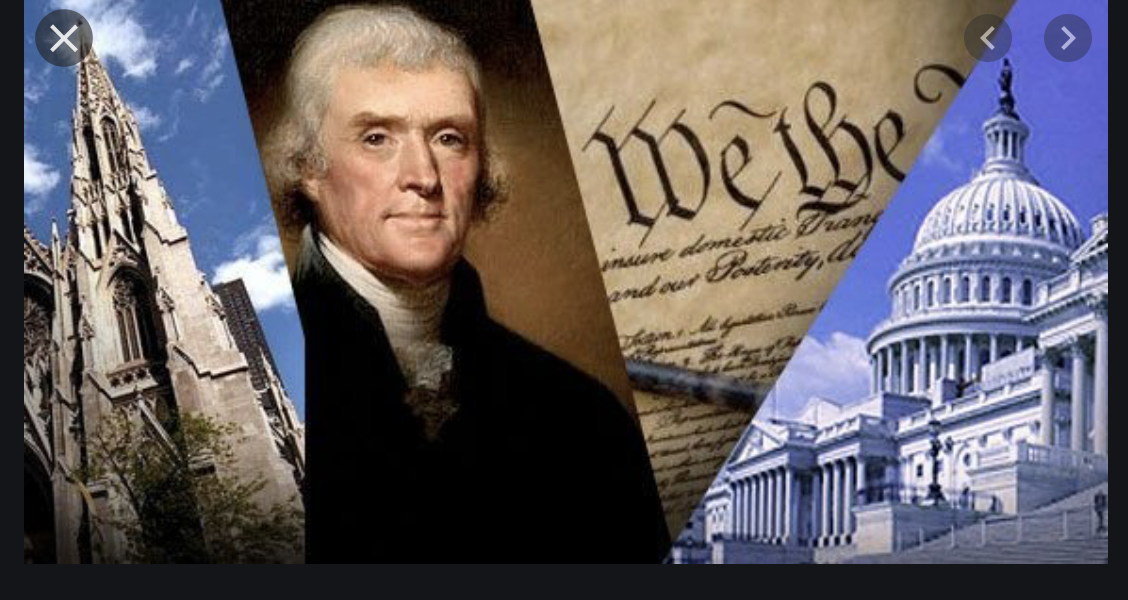
Cline on the Constitution – It is not supposed to be a Prison Wall
Introduction
The Supreme Court this term issued decisions in three cases directly addressing religious liberty. A fourth presages a future case that may be a harbinger for the resolution of the growing conflict between religious freedom and gay rights.
No discussion of Religious cases can usually proceed without the habitual invocation of the Wall of Separation between Church and State.
Although it is often invoked as a Constitutional principle, does the Constitution contain any language about a “Wall”?
The short answer is: No. There is no express reference to a “Wall of Separation” in the Constitution.
The concept derives from a statement by Thomas Jefferson. He said, “I contemplate with sovereign reverence that act of the whole American People which declared that their legislature should “make no law respecting an establishment of religion, or prohibiting the free exercise thereof, “ thus building a “Wall of Separation” between Church and State.”
The phrase, even though it is not in the Constitution, has proven useful in delineating the position of the Supreme Court concerning the relations of government to religion. As I have explained in previous posts, the decisions of the Supreme Court have not always been consistent, if you will, as to height and thickness of the Wall. It has largely depended on whether the Court, in a particular case, adopts, in the language of legal scholars, an “Accommodationist” view in which government is free to accommodate religion or a “Separationist” view that insists on a Strict Separation of Church and State.
The “Wall” is a metaphor. And like all metaphors it can be misused. Some scholars as well as some lower court federal judges have stretched the “Wall” metaphor to the point where it’s meaning is perverted. It takes on the opposite meaning of what Jefferson intended.
The Wall metaphor was meant to wall the Government off from creating an official government religion. It was meant to block the government from requiring adherence to a State approved Religion. It was meant to be a barrier against the government interfering with an individual’s practice of his religion. It was put there as a redoubt to protect religious beliefs and practices from interference by the Government. Not the other way around.
In was not meant to wall citizens off from society and full participation in civic life. It was not meant to imprison men and women of faith. Yet that is what happens when laws are used as the brick and mortar to Wall off those who wish to live in accordance with the dictates of their faith.
Anti-Discrimination laws have been widely expanded since the 1960s, with new categories of protected groups added almost daily. And the enforcement of rules against any form of discrimination has reached the point where it has become a kind of State Religion, representing the very evil the First Amendment was designed to guard against.
When the State requires someone to bake a cake celebrating an event they find inimical to their religious beliefs; when religious practices like prayer are banned from public gatherings public events and meetings; when private individuals and business enterprises are required to fund medical procedures like abortion in contravention of their religious beliefs there is little difference between that and establishing a State Religion and enforcing the dictates of its ministers of correctness.
In order to practice their faith many citizens adopt principles and practices in how they conduct their life. The enforcement of laws which discriminate against these principles and practices can mean they must Wall themselves off from society, business, education. Any attempt they make to live other than the way government prescribes, and they face governmental hostility and social opprobrium.
In the next four parts of my blog, I will explore how the Supreme Court reinforced the principle, that the Government, under the First Amendment, has no business trying to dictate how a citizen should practice his religion nor may they build a Prison Wall around him to prevent him from fully participating in society.
Next up: Espinoza v. Montana Dept. of Revenue and how barring public benefits to students was held to be an unconstitutional discrimination against religious schools.